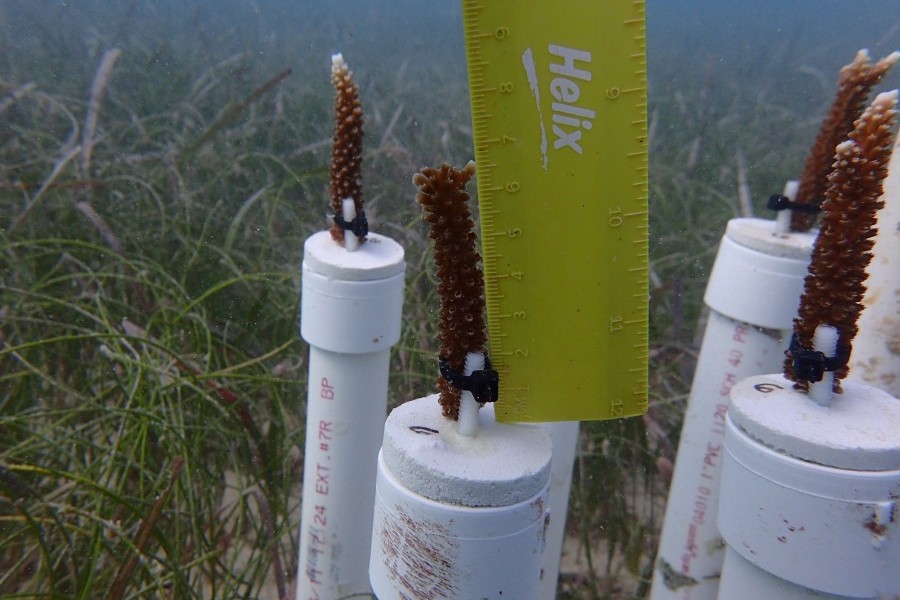End-of-year update: Seagrass may help protect corals from ocean acidification, Mote science affirms
Mote Marine Laboratory research in 2018 strengthened the concept that seagrasses could help protect nearby coral reefs from ocean acidification (OA), a chemistry shift occurring as part of global climate change.
The research, led by Mote Ocean Acidification Program Manager Dr. Emily Hall and in prep for submission to a peer-reviewed scientific journal, examined coral physiology in the presence of seagrass in the lab and in the ocean.
Coral reefs are the most biologically diverse and economically important ecosystems on the planet, but they are sensitive to impacts from human activity. OA (decreased pH driven mainly by human-made carbon dioxide entering the ocean) may threaten or even dissolve calcium carbonate structures including coral skeletons, while impacting multiple marine animals’ health and physiology. Seagrass meadows, sometimes found adjacent to coral reefs in the Florida Keys, can capture the carbon molecules involved in OA, possibly mediating its effects on corals downstream.
Mote scientists tested the impacts of the presence of two seagrass species, shoal grass and manatee grass (Halodule wrightii and Syringodium filiforme, respectively) on carbonate chemistry and health of staghorn coral, finger coral and mustard hill coral (Acropora cervicornis, Porites porites, and Porites astreoides respectively) in ocean acidification scenarios expected to occur in this century and present day conditions, in land-based experimental settings as well as physiological performance of staghorn coral within and outside a natural seagrass bed. They monitored the corals and the beneficial algae that live in coral tissues, called zooxanthellae, for several indicators of their physiological and functional responses. Physiological responses varied among coral species; however, coral growth and the photosynthesis rates of their zooxanthellae were generally higher in the presence of seagrass — suggesting the seagrass may buffer against negative effects from OA.
